Miele IR6001 Operating instructions
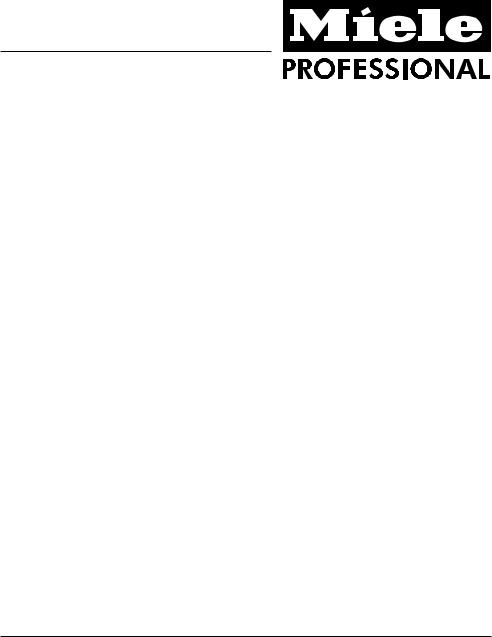
Operating Instructions
Industrial cleaner IR 6001
To prevent accidents and machine damage read these instructions before
UV
installation or use. |
M.-Nr. 06 006 651 |

Contents
Guide to the machine. . . . . . . . . . . . . . . . . . . . . . . . . . . . . . . . . . . . . . . . . . . . . . . 4
IMPORTANT SAFETY INSTRUCTIONS . . . . . . . . . . . . . . . . . . . . . . . . . . . . . . . . . 6
Functional description . . . . . . . . . . . . . . . . . . . . . . . . . . . . . . . . . . . . . . . . . . . . 10 Cleaning process. . . . . . . . . . . . . . . . . . . . . . . . . . . . . . . . . . . . . . . . . . . . . . . . . . 10 Water recycling . . . . . . . . . . . . . . . . . . . . . . . . . . . . . . . . . . . . . . . . . . . . . . . . . 10 MCU-control. . . . . . . . . . . . . . . . . . . . . . . . . . . . . . . . . . . . . . . . . . . . . . . . . . . . . . 11
First Use . . . . . . . . . . . . . . . . . . . . . . . . . . . . . . . . . . . . . . . . . . . . . . . . . . . . . . . . 12 Setting the water softener . . . . . . . . . . . . . . . . . . . . . . . . . . . . . . . . . . . . . . . . . . . 12 Loading and unloading . . . . . . . . . . . . . . . . . . . . . . . . . . . . . . . . . . . . . . . . . . . . . 12 Adding detergent. . . . . . . . . . . . . . . . . . . . . . . . . . . . . . . . . . . . . . . . . . . . . . . . . . 14 Level indicator . . . . . . . . . . . . . . . . . . . . . . . . . . . . . . . . . . . . . . . . . . . . . . . . . . . . 15 Venting the dispensing systems . . . . . . . . . . . . . . . . . . . . . . . . . . . . . . . . . . . . . . 16 Altering the temperature and drying times . . . . . . . . . . . . . . . . . . . . . . . . . . . . . . 16 Key switch . . . . . . . . . . . . . . . . . . . . . . . . . . . . . . . . . . . . . . . . . . . . . . . . . . . . . . . 18 Turning on . . . . . . . . . . . . . . . . . . . . . . . . . . . . . . . . . . . . . . . . . . . . . . . . . . . . . . . 19 Program cycle . . . . . . . . . . . . . . . . . . . . . . . . . . . . . . . . . . . . . . . . . . . . . . . . . . . . 20 Interrupting a program. . . . . . . . . . . . . . . . . . . . . . . . . . . . . . . . . . . . . . . . . . . . . . 21 Turning off . . . . . . . . . . . . . . . . . . . . . . . . . . . . . . . . . . . . . . . . . . . . . . . . . . . . . . . 21
Applications . . . . . . . . . . . . . . . . . . . . . . . . . . . . . . . . . . . . . . . . . . . . . . . . . . . . . 22 Optimizing the standard programs . . . . . . . . . . . . . . . . . . . . . . . . . . . . . . . . . . . . 22 Dosage and Detergents . . . . . . . . . . . . . . . . . . . . . . . . . . . . . . . . . . . . . . . . . . . . 24 Wash tests . . . . . . . . . . . . . . . . . . . . . . . . . . . . . . . . . . . . . . . . . . . . . . . . . . . . . . . 24 Electronics . . . . . . . . . . . . . . . . . . . . . . . . . . . . . . . . . . . . . . . . . . . . . . . . . . . . . . . 25 Cleaning metal. . . . . . . . . . . . . . . . . . . . . . . . . . . . . . . . . . . . . . . . . . . . . . . . . . . . 28 Optics . . . . . . . . . . . . . . . . . . . . . . . . . . . . . . . . . . . . . . . . . . . . . . . . . . . . . . . . . . 30
Baskets and Inserts . . . . . . . . . . . . . . . . . . . . . . . . . . . . . . . . . . . . . . . . . . . . . 30 Particle decontamination . . . . . . . . . . . . . . . . . . . . . . . . . . . . . . . . . . . . . . . . . . . . 32
Reactivating the water softener . . . . . . . . . . . . . . . . . . . . . . . . . . . . . . . . . . . . . 33 Filling the salt container . . . . . . . . . . . . . . . . . . . . . . . . . . . . . . . . . . . . . . . . . . . . . 34 Position the salt container as follows . . . . . . . . . . . . . . . . . . . . . . . . . . . . . . . . . . . 35
Serial interfaces . . . . . . . . . . . . . . . . . . . . . . . . . . . . . . . . . . . . . . . . . . . . . . . . . . 36 Preparing the MCU for report printout . . . . . . . . . . . . . . . . . . . . . . . . . . . . . . . . . . 37
2

Contents
Cleaning and Care . . . . . . . . . . . . . . . . . . . . . . . . . . . . . . . . . . . . . . . . . . . . . . . . 39 Cleaning the filters in the wash cabinet. . . . . . . . . . . . . . . . . . . . . . . . . . . . . . . . . 39 Cleaning the coarse filter. . . . . . . . . . . . . . . . . . . . . . . . . . . . . . . . . . . . . . . . . . . . 39 Cleaning the fine filter . . . . . . . . . . . . . . . . . . . . . . . . . . . . . . . . . . . . . . . . . . . . . . 39 Cleaning the flat and micro-fine filters . . . . . . . . . . . . . . . . . . . . . . . . . . . . . . . . . . 40 Cleaning the water inlet filters. . . . . . . . . . . . . . . . . . . . . . . . . . . . . . . . . . . . . . . . . 41
Drying unit (TA) - Cleaning and care . . . . . . . . . . . . . . . . . . . . . . . . . . . . . . . . . 42 Changing the coarse filter . . . . . . . . . . . . . . . . . . . . . . . . . . . . . . . . . . . . . . . . . . . 42 Exchanging the HEPA particle filter. . . . . . . . . . . . . . . . . . . . . . . . . . . . . . . . . . . . 42
Correcting minor faults . . . . . . . . . . . . . . . . . . . . . . . . . . . . . . . . . . . . . . . . . . . . 43 Heater limiter . . . . . . . . . . . . . . . . . . . . . . . . . . . . . . . . . . . . . . . . . . . . . . . . . . . . . 43
Installation . . . . . . . . . . . . . . . . . . . . . . . . . . . . . . . . . . . . . . . . . . . . . . . . . . . . . . 44
Electrical connection. . . . . . . . . . . . . . . . . . . . . . . . . . . . . . . . . . . . . . . . . . . . . . 45
Plumbing. . . . . . . . . . . . . . . . . . . . . . . . . . . . . . . . . . . . . . . . . . . . . . . . . . . . . . . . 46
Caring for the environment . . . . . . . . . . . . . . . . . . . . . . . . . . . . . . . . . . . . . . . . . 48 Disposal of an old appliance . . . . . . . . . . . . . . . . . . . . . . . . . . . . . . . . . . . . . . . . . 48
3
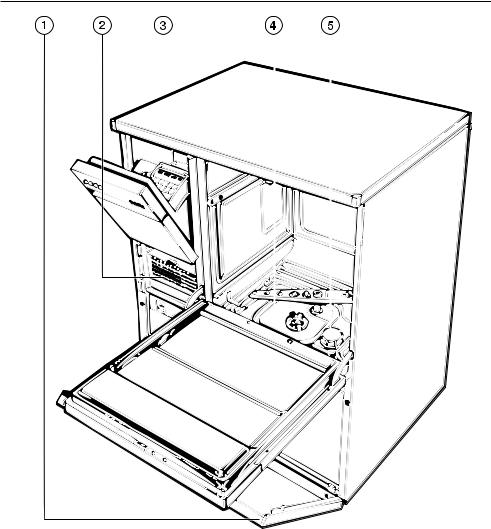
Guide to the machine
a Service panel |
c MCU |
b TA Drying unit |
d Filter combination |
|
e Reactivation socket for salt container |
|
(water softener) |
4
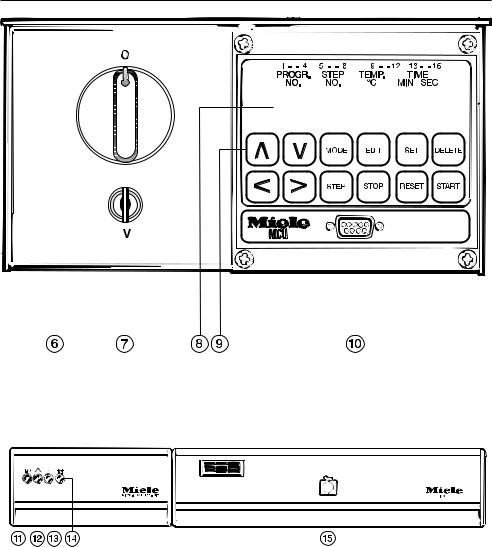
Guide to the machine
|
|
|
|
|
|
|
|
|
|
|
|
|
|
|
|
|
|
|
|
|
|
|
|
|
|
|
|
|
|
|
|
|
|
|
|
|
|
|
|
|
|
|
|
|
|
|
|
|
|
|
|
|
|
|
|
|
|
|
|
|
|
|
|
|
|
|
|
|
|
|
|
|
|
|
|
|
|
|
|
|
|
|
|
|
|
|
|
|
|
|
|
|
|
|
|
|
|
|
|
|
|
|
|
|
|
|
|
|
|
|
|
|
|
|
|
|
|
|
|
|
|
|
|
|
|
|
|
|
|
|
|
|
|
|
|
|
|
|
|
|
|
|
|
|
|
|
|
|
|
|
|
|
|
|
|
|
|
|
|
|
|
|
|
|
|
|
|
|
|
|
|
|
|
|
|
|
|
|
|
|
|
|
|
|
|
|
|
|
|
|
|
|
|
|
|
|
|
|
|
|
|
|
|
|
|
|
|
|
|
|
|
|
|
|
|
|
|
|
|
|
|
|
|
|
|
|
|
|
|
|
|
|
|
|
|
|
|
|
|
|
|
|
|
|
|
|
|
|
|
|
|
|
|
|
|
|
|
|
|
|
|
|
|
|
|
|
|
|
|
|
|
|
|
|
|
|
|
|
|
|
|
|
|
|
|
|
|
|
|
|
|
|
|
|
|
|
|
|
|
|
|
|
|
|
|
|
|
|
|
|
|
|
|
|
|
|
|
|
|
|
|
|
|
|
|
|
|
|
|
|
|
|
|
|
|
|
|
|
|
|
|
|
|
|
|
|
|
|
|
|
|
|
|
|
|
|
|
|
|
|
|
|
|
f Main power switch |
|
|
i Operating control panel |
||||||||||||||||||||||||
g Key switch |
|
|
j Serial interface |
||||||||||||||||||||||||
h Display |
|
|
|
|
|
|
|
|
|
|
|||||||||||||||||
|
|
|
|
|
|
|
|
|
|
|
|
|
|
|
|
|
|
|
|
|
|
|
|
|
|
|
|
|
|
|
|
|
|
|
|
|
|
|
|
|
|
|
|
|
|
|
|
|
|
|
|
|
|
|
|
|
|
|
|
|
|
|
|
|
|
|
|
|
|
|
|
|
|
|
|
|
|
|
|
|
|
|
|
|
|
|
|
|
|
|
|
|
|
|
|
|
|
|
|
|
|
|
|
|
|
|
|
|
|
|
|
l "On-Off" indicator light |
n "DOS dispenser level" indicator light |
l "In Operation" indicator light |
o Door release |
m "Fault-Error" indicator light |
|
5

IMPORTANT SAFETY INSTRUCTIONS
This machine conforms to current safety requirements. Inappropirate use can however lead to personal injury and property damage. When using an electrical appliance, basic precautions should always be followed including the following: Keep these instructions in a safe place, and make them available to future users.
Use
This machine is designed for commercial use and for
specialized applications only, as described in these Operating Instructions. Using it for purposes other than those for which it is designed could cause damage or injury. The manufacturer cannot be held responsible for any damage caused by improper use.
The installation of this unit in non stationary locations (e.g. ships)
must be performed by a qualified installer or service agency, in strict accordance with national and local safety regulations and standards.
Please pay attention to the following notes, to maintain safe procedures.
The machine should be commissioned and then
maintained only by a Miele authorized service technician. Repairs by unqualified persons could be dangerous.
Do not install the machine in an area where a danger of explosion
may be present.
Be certain this appliance is properly installed and grounded by
an authorized technician. To guarantee the electrical safety of this appliance, continuity must exist between the appliance and an effective grounding system. It is imperative that this basic safety requirement be met. If there is any doubt, have the electrical system of the house checked by a qualified technician. The manufacturer cannot be held responsible for the consequences of an inadequate grounding system (e.g. electric shock).
A damaged machine can be dangerous. Turn off the power
immediately and call an authorized Miele Service technician.
Unauthorized personnel should not be allowed access to the machine
or its controls.
6

IMPORTANT SAFETY INSTRUCTIONS
Take care when handling liquids such as detergents, neutralizing
agents, wetting agents and rinse aids. These may contain irritant or corrosive ingredients, acids or alkalis. Never use any organic solvent, as the danger of an explosion exists. Follow all safety instructions! Wear protective gloves and goggles.
Avoid inhalation of powder cleaners.
The water in the machine must not be used as drinking water.
Do not sit or lean on the open door or rest objects on it. This could
cause the machine to tip and be damaged or cause an injury.
Be careful when sorting items with sharp pointed ends. Position them in the machine so that you do not hurt
yourself or create danger for other operators.
When using this machine regard the high temperatures and be
especially careful not to scald or burn yourself. When opening the door bypassing the electrical lock, a danger of burning, scalding or corrosion exists or when using disinfection agents, the inhalation of toxic fumes. Let baskets and inserts cool before touching them. Any water which may remain in containers will be very hot and must be emptied into the wash cabinet.
After drying with the TA drying unit open the door to allow the items
and inserts to cool down.
Do not touch the heating elements during or directly after the end of a
program. You could burn yourself.
Never use a hose or steam cleaner on or near the machine.
Before any maintenance or repair work is undertaken, the machine
must be unplugged or disconnected from the main power supply or circuit breaker.
The following points should be observed to avoid damage to the IR 6001 and the loads being cleaned.
Use only cleaning agents formulated for special processes
and approved by Miele for use with this machine. Use of unsuitable cleaning agents could adversely affect the load or the machine.
Pre-treating (e.g. with cleaning agents) certain soiling can cause
foam. Foam can have an adverse effect on the cleaning results.
7

IMPORTANT SAFETY INSTRUCTIONS
When a chemical additive is recommended, the manufacturer of
the machine takes no responsibility for the effect of the chemical on the material of the items being cleaned. Please be aware of changes in formulation, storage conditions, concentration etc, which may not be publicized by the chemical producer, can have a negative effect on the cleaning result.
When using cleaning agents and specialized products it is essential
that the manufacturer’s instructions are followed. Only use the detergent for the application described by the manufacturer, to avoid any material damage or the occurrence of strong chemical reactions.
The machine is designed for operation with water and cleaning
agents only. Organic solvents must not be used in the machine, as the danger of explosion exists under certain circumstances. Although this is not the case with all organic solvents, other problems could arise with their use, for example damage to rubber and synthetic materials of the machine.
In critical applications where stringent requirements have to be
met, it is strongly recommended that all process parameters, such as cleaning agent or quality of water are discussed with the Miele Applications specialists.
If the clean objects are subject to particularly stringent requirements
(e.g. chemical analysis, industrial process), a regular quality control test should be carried out by the user to ensure that required standards of cleanliness are being achieved.
The mobile units and special inserts should only be used for
their specific application.
Empty any containers or utensils before arranging them in the
machine.
Do not allow any remains of acids or solvents, in particular
hydrochloric acid or chloride solutions, as well as corroding ferrous material to get into the wash cabinet. The presence of compounds in any solvents should be minimal, (especially those in hazard class A1).
Do not wash items with chips adhered. Depending on kind and
shape of the chips the circulation pump can get damaged or contact corrosion can occur.
8
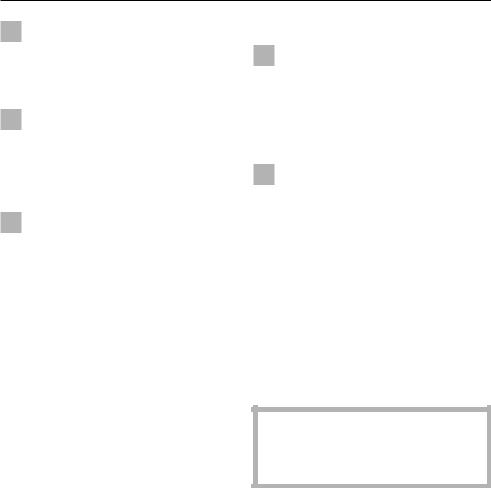
IMPORTANT SAFETY INSTRUCTIONS
Ensure that solutions or steam containing hydrochloric acid do not
come in contact with the stainless steel casing of the machine, to avoid any corrosion damage.
Waste water must be discharged in accordance with national and local
water regulations. Consult your local water authority. Where discharge is indirect, ensure that waterborne residues do not exceed statutory limits.
Please follow the advice on installation in these instructions
and the separate Installation Instruction manual.
Using accessories
Only specific additional equipment made by Miele should be
connected to this machine. Consult Miele on the type and application of such equipment.
Disposal of an old appliance
When disposing of your old machine make it unusable.
Disconnect the power cord and cut off the plug. For environmental and safety reasons ensure the machine is completely drained of any residual water and cleaning agent. Observe safety regulations and wear safety goggles and gloves. Make the door lock inoperative, so that children cannot accidentally shut themselves in. Machines with a tank system, remove the water from the tank before disposing the machine.
The manufacturer cannot be held responsible for damage caused by non-compliance with these Important Safety Instructions.
9

Functional description
Applications
The Industrial Cleaner is designed for specialized sectors of industrial high technology production, where a consistently high standard of cleaning is required, and where the structure of the items to be cleaned may be complex. Areas of appliacation are:
–Electronics, such as circuit boards and solder frames,
–Metal cleaning
–Optics
–Particle decontamination
Cleaning process
The Industrial Cleaner works on the principle of fresh water circulation. The bath time for cleaning and rinsing is approx. 20-30 minutes. Drying is effected by means of an integrated drying unit. A period of 15 to 45 minutes must be added to the above time to thoroughly dry the batch, depending on the heat retention capacity of the items in the load and the amount of water remaining. The machine can be programmed, and a variety of baskets and inserts used, depending on specific needs. Special cleaning programs can be written for individual applications.
Water recycling
The IR 6001 comes equipped with a two stage drainage system and a pump to bring rinse water back into the machine enabling it to be re-used. Rinse water which is still quite clean, for example from the final rinse, can be directed into an external holding tank and be fed back into the machine for the following pre-wash or main wash cycle. The holding tank does not come with the machine, and must be supplied on-site.
The following procedures can be realized with the Industrial Cleaner and an external holding tank.
1.Without an external holding tank
The water from the pre-wash and main wash is discharged into the waste water system, or into an effluent treatment plant.
2.Recycling of rinse water
E.g. the water of the last two rinse cycles will be re-used for the rinse or neutralization for the next batch. The waste water of the cleaning cycle will be drained into the waste water system or an effluent treatment plant.
3. Recycling of cleaning waste water
The waste water of the cleaning cycle will be re-used for the cleaning cycle of the next batch. The waste water of the remaining rinse cycles will be drained into the waste water system or an effluent treatment plant.
10

Functional description
MCU-control
The Industrial Cleaner is equipped with a micro computer unit control (MCU). The control is programmable, giving the user the ability to optimize programs and create new cleaning programs. The controls can be programmed for a range of individual applications; for example, time, temperature, water quality, dispensing of various liquid detergents and additives. During the wash process the display will chow either the current stage of the process, or an error message if there is a fault.
The large memory capacity enables different programs to be stored and then selected according to the load to be cleaned. Different keys are used with the key switch to restrict access to the operating and programming options. The control unit has two serial interfaces which allow wash parameters to be monitored or documented through the use of a printer or PC (not supplied).
Should your needs change or the machine be needed for other applications, different programs can be designed with the help of Miele.
11
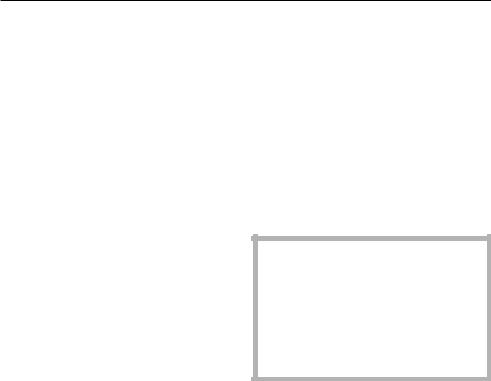
First Use
Setting the water softener
Before using the machine for the first time the regeneration parameters must be set by the service technician according to the local water hardness level (see MCU operating and programming manual). The local water authority can advise you of the water hardness in your area.
Loading and unloading
^Press the door release button, hold the door grip and open the door at the same time.
^Load the items into their respective baskets and inserts.
Automatic coupling
The machine is supplied as standard with an automatic spring-loaded coupling for either the upper basket or a mobile unit.
Make sure that the spring adapter for water connection engages correctly when a basket or injector unit is inserted in the machine. It must be 3/16" (4-5 mm) higher than the water connection inlet in the machine. If this is not the case, adjust the adapter.
^Loosen the lock ring.
^Push up the adapter (3/16" [4-5 mm] higher than the water connection inlet in the machine) and re-tighten the lock ring.
^Select baskets and inserts depending on the items to wash
12
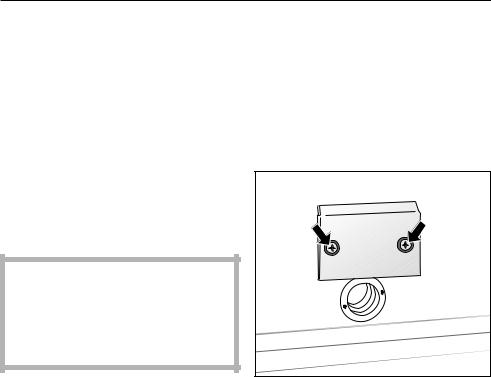
First Use
Exchanging the upper spray arm
When the lower basket is being used alone for large items such as solder frames, the large spray arm, supplied with the machine, should be attached to the water inlet on the roof of the cabinet.
^Pull out the top basket, lift it from the runners and remove.
^Unscrew the small upper spray arm retainer and remove.
^Install the large upper spray arm with its threaded spindle flange.
Important: Please note that only top baskets, mobile units or injector nozzle should be coupled without a spray arm. For other applications the small spray arm should be re-installed.
Drying air deflector
The machine comes equipped with a deflector for the heated air in front of the vent at the rear of the wash cabinet.
The deflector must be dismantled if mobile units or baskets with a TA adapter (an adapter at the drying air vent in the wash cabinet) are used.
^Loosen both screws at the deflector.
^Remove the deflector.
13
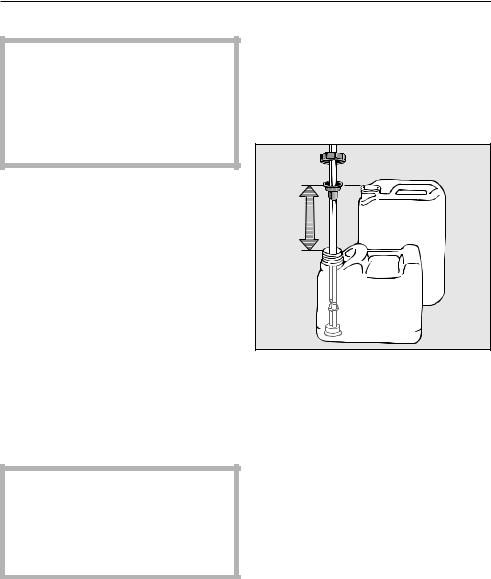
First Use
Adding detergent
,Exercise caution when handling detergents! They may contain acids, alkalis or disinfectants.
Take care to ensure that the necessary safety precautions are observed. Wear protective gloves and goggles.
The IR 6001 comes standard with 3 DOS pumps for automatic dispensing of liquid additives: 3 DOS 60/30 injector pumps for dispensing liquid cleaning agent. Dispensing capacity is 60 ml/30 second (channel 6, 8 and 9).
The amounts of cleaning agent required, depending on the application chosen for this machine, are dispensed through these systems.
Additionally a DOS pump DOS 10/30 for dispensing acid additives is supplied. Dispensing capacity is
10 ml/30 secs (channel 9).
If needed, the Miele Technical Service can exchange a DOS 60/30 with the DOS 10/30.
,Powdered detergent must be placed on the door (regard manufacturer’s dosage). Use wash programs without draining at the start of a program. Caution: Avoid powder inhalation!
Filling the containers with liquid additive
The IR 6001 has 3 suction tubes for use with the external detergent containers. Select the stopper with the appropriate thread (depending on the size of the container).
The suction tube length can be adjusted.
^Insert the suction tube all the way until its end touches the bottom of the container.
^Screw the cap on firmly.
14
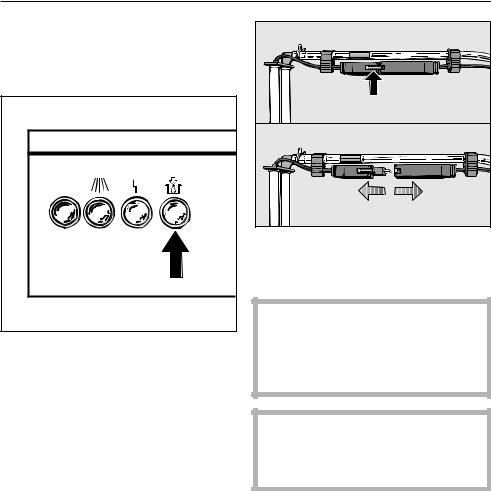
First Use
Level indicator
The DOS level indicator v lights if at least one of the containers fitted with a suction tube is almost empty.
I-O |
The indicator also lights if at least one suction tube is inserted in an empty container, that is not used.
If a dispensing system is not used, the service technician should remove the plug connection for this system, to prevent the DOS indicator light from staying on.
^Press the unlock latch and pull the plug connection apart.
The containers should not be allowed to empty completely and should be filled regularly, otherwise the first wash cycle, after refilling, will take place without detergent.
The internal dispenser pump hoses are subject to wear and should be replaced as preventative maintenance every 12 to 18 months.
15

First Use
Venting the dispensing systems
Before using the machine for the first time, the air must be expelled from the dispensing system.
This should also be done if the container has not been refilled in time and the dispensing system was allowed to empty completely.
^Close the door.
^Set the key switch to position II.
^Turn the main switch to I (On).
^Select program 14 (DOS-FILL/DOS-FUELL) using the key pads O or M. "14 DOS FILL" (or DOS-FUELL) appears in the display field.
^Press the "Start" key pad.
^Repeat the program several times if necessary.
Altering the temperature and drying times
The temperatures for cleaning and drying, as well as drying times, are stored for each program (see program summary supplied).
Note: Header parameters which have not been programmed do not appear in the display.
To change the stored values:
^Set the key switch to position II.
^Turn the main switch to I (On).
^Select the program (see "Turning on").
16
